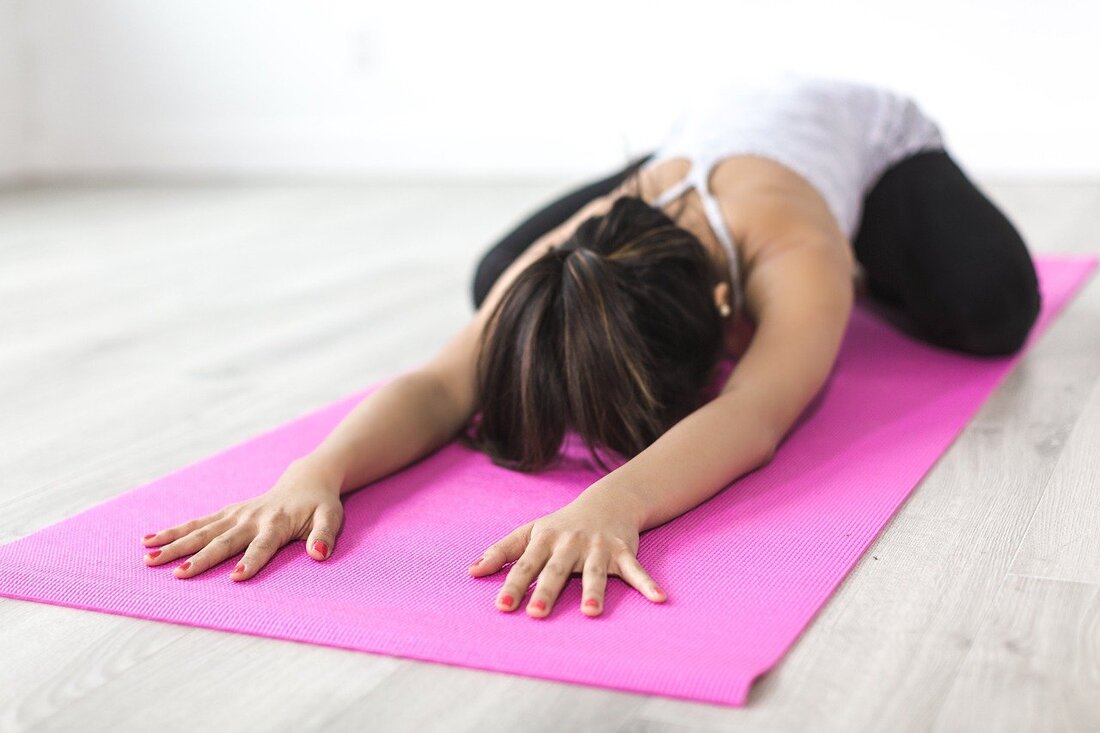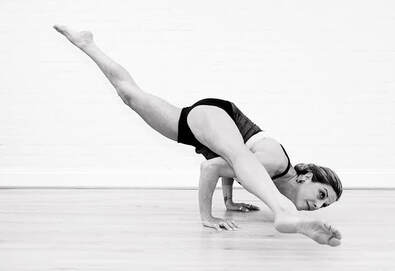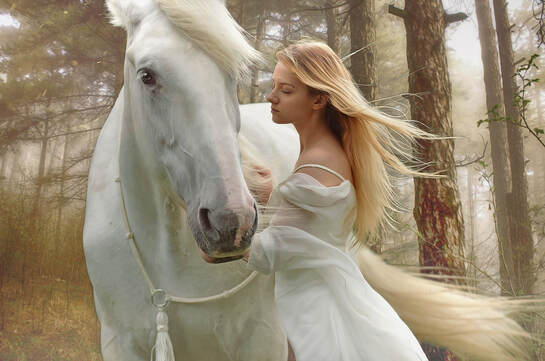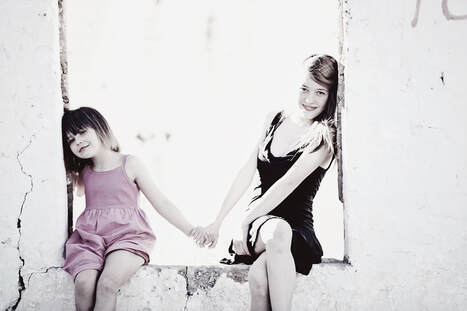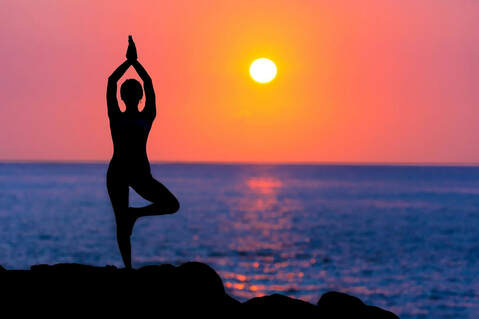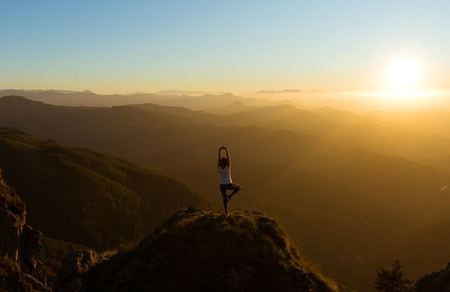|
Image credit: Pixabay.com
Ever since yoga exploded in popularity in the 20th century, we've heard countless things that the mind and body exercise can do for your overall health and wellness. Previously on 532Yoga, we wrote about the benefits of meditation and how it can do more than just calm you down— it can slow down the aging process and stimulate your brain as well. While it's clear that yoga has done much to improve our health and lifestyles, the opposite question must be asked: are there things that we can change in our lifestyles that can help improve our yoga? Funnily enough, yes there are. Today, we'll be talking about the most abundant protein in our bodies, and what it can do to help us refine our yoga practice. That's right, today we're talking about collagen. What Does Collagen Do? Collagen has been a hot topic for a couple of years, and it's not hard to figure out why. It's been touted as the ultimate solution to maintaining supple skin and preventing aging, with collagen powders, topical creams, supplements, and even injections growing in popularity over the last few years. But beyond all the hype, what does collagen really do? Quite a lot, actually. A post on Live Science suggests there are several different types of collagen in the body. There's collagen for your cartilage, in your bone marrow, in your basement membranes, and even in your hair and cells. Speaking medically, however, taking in collagen into our bodies can do a lot to boost our bodily functions and overall health. Collagen has been found to reduce pain and improve joint health for those suffering from arthritis. When applied topically, it can also promote wound healing and prevent infection. And of course, most importantly for those who practice yoga, it can improve your flexibility. Does Collagen Really Work? The short answer is: yes and no. Collagen certainly isn't the fountain of youth or some kind of magic bullet to get the perfect skin and figure. However, WebMD claims that research on collagen shows promise, especially when it comes to bone, joint, and muscle health— all essential to practicing yoga. In terms of muscle and cartilage, taking collagen supplements or increasing the amount of collagen in your diet can do a lot in improving muscle mass and body composition. It's especially significant for yoga, where the benefits of collagen are only strengthened by the activity. Practicing regular movements like in yoga can actually help strengthen collagen bonds and structure in your body, which feeds back again and improves your flexibility, healing, and overall yoga journey. Where Can We Get Collagen? The benefits of collagen are clear, but where can we get it? Collagen is a protein, so it stands to reason that you can find it in protein sources like soy products, black beans, kidney beans, other legumes, seeds, and nuts. You can also add to the amount of collagen in your diet by taking supplements. Collagen can also be found in berries, citrus and tropical fruits, garlic, and red and yellow vegetables. On the supplement front, there are tons of vegan collagen supplement options like the PlantFusion Complete Plant Collagen Builder. If you’re looking for more traditional sources, Brightcore’s Revive is a multi-collagen protein powder made from grass-fed hydrolyzed bovine, cage-free chickens, wild-caught fish, and egg shell membrane. Revive is tasteless and mixes in with food and drink easily, and also contains hyaluronic acid for more hydrated skin and hair. No matter what the source, the evidence is clear: if you’re looking to boost your yoga practice, adding collagen into your diet is the way to go.
5 Comments
I am not in the habit of writing a review unless it’s something I so love that I think is worth sharing.
However, I have been asked to review a pair of workout pants that was kindly gifted to me to try out from ‘Born Tough’ (www.borntough.com) for this very reason, so here it is... I’m pretty fussy when it comes to yoga pants. I like them to fit well and last well, I don’t like them to get baggy, and I don’t like zips and ties or heavy seams etc. as they have to move with me through a whole range of standing, seated, supine, prone and inverted poses. Born Tough currently have one style, so I only had to choose a color. They looked pretty good quality; heavy enough not to bag, and thin enough to move in. I tried them on, and first thing was, they were really difficult to get over my feet as they are cut very narrow (and I don’t have big feet!). They are pretty smart looking and I thought they would carry well from teaching classes to going out. But, just one day and four classes later... Some of the seams on the legs are coming apart. The logo on the front of the pants came off, and the seams around the ties are open. I think for walking, running, or gentle stretches, they would be fine, and cost wise, they are only $25, but for an active yoga practice.. I haven’t worn them since. So there you have it. If you want to see, here are the links provided... https://www.borntough.com/collections/womens-workout-leggings-and-bottoms/products/born-tough-women-contoured-tracksuit-bottom-ash-brown https://uk.borntough.com/collections/womens-workout-leggings-and-bottoms/products/born-tough-women-contoured-tracksuit-bottom-ash-brown https://au.borntough.com/collections/womens-workout-leggings-and-bottoms/products/born-tough-women-contoured-tracksuit-bottom-ash-brown After years of training as a martial artist, Ginny found her true inner warrior in yoga. Ginny took her formal teacher training under 532Yoga (previously US1Yoga), where her horizons were broadened to include studies in Iyengar and Viniyoga. Ginny continues to further her yogic education at every opportunity, and has had the pleasure of taking the Rocket Series training from David C. Kyle, Acro yoga immersions, and various wonderful workshops with both David and Doug Swanson as well as Swastha Yoga therapy training under Dr. Ganesh Mohan- who's parents, A.G. and Indira studied under Krishnamachayra. How did you begin practicing yoga? Many years ago, as my yoga friend would grab their mats and go to yoga class, I would put on my blacks and head to my martial arts dojo. They would ask me to join them- but (silly hippies!) gentle stretching versus active kicking and punching? Thanks- but no. Then, while engaging in some gloriously high tornado kicks, I catastrophically injured my leg. After a period of healing ( about 18 months) my friends tried again- and succeeded in getting me into a yoga class. I had the worst attitude: This was going to be a complete waste of my time- all I really wanted was to be kicking punching, and kia-ing - not sitting and stretching. And obviously, like so many people who don't do yoga- I had no idea what yoga was all about. My first class rocked my world- and changed my perceptions about this ancient discipline. This stuff was powerful. It wasn't easy- and it was strong. It challenged me on every level, humbled me, and addicted me. It balanced me, kicked my asana- and left me wanting more. I traded in my martial artist warrior- for a deeper quieter inner warrior. And I never looked back. Why is yoga important to you? On the mat you find strength, balance and flexibility. You find calm. You find compassion- for yourself, and you learn to let go. You learn that the ego is your harshest critic, and you learn that its okay to fail and try again. You learn to fall, you learn to stand up. You learn perseverance. And all these things give rise to confidence. From a place of confidence- love, kindness, compassion arise. These gifts do not stay on the mat- you take them off the mat, out of the studio, and into the world with you and into everything you do. Yoga is important to me- because from the mat, we begin to change the world into a kinder place, one yoga pose at a time. Truly, lokha samastha sukhino bhavantu. What made you want to teach yoga? In order to get my yoga practice in while away on a family vacation, I would sneak out to the beach early in the morning to work on my asanas (poses) by the sea w/ the waves crashing in the background and the gulls providing the music of my savasana. The first day I did this, a man watched. The second day, he jumped in and started doing. I started instructing him on the basic poses. By the third day, a few more people joined in. This continued for the whole week- sometimes it was me and my husband , and the man, sometimes we had a larger group. The man- I'll call him William - later told me that he was struggling- w/ money, work, personal issue etc. He was staying at a "party" house- and he wasn't really into that. So while his housemates slept it off- he walked the beach. And when he found me- he was ready to try this yoga stuff he had heard about. He said the weeks practice had helped him find some clarity - and that when he went home, he was going to search out some yoga classes. We kept in touch for awhile- and sure enough, William reported to me that he was taking classes. He was amazed at how a few simple moves could strengthen both body and mind. And while he still had issues, he was more at peace. I signed up for a teacher training course that very same fall- the power of yoga compelled me- something so mind blowing that it had to be shared..... the world needed to know about this thing called yoga. Do you have a preferred type of yoga to teach/practice? Please elaborate. I am drawn to the trans-formative qualities of power yoga. Nothing changes a body quite like it: Fluid strength and lightning reflexes as well as beautiful tone and increased function and range of motion. Arm balances and inversions liberally sprinkled in are amazingly fun and confidence building. I love to teach Rocket Yoga- created by Larry Schultz , and a style I like to call my "Funky Flow"- adventuresome freestyle vinyasa. Describe a yoga class with Ginny Loving. What makes the experience unique? My favorite quote- by Dr. Seuss- "If you don't do these things you should- these things are fun and fun is good." Every pose in yoga has variations and modifications, and I highly encourage my students to explore their practice. If you don't explore, how will you ever know? So I offer ways to take it up, or take it down or add variety. Not unusual during a pose to see everybody doing a different variation- after all variety is the spice of life! We play fun, irreverent, rocky and rolly music, and while the business of transformation is serious, you wont find me preaching- we laugh and play, and enjoy. I encourage students to talk to me, and to talk to each other- b/c sangha (community) is a huge part. You'll leave my class sweaty, tired, happy, with smile on your face and a new asana under your belt. And a spring in your step. The yoga journey is a lifelong one- the roadtrip should be a blast. Who is your favorite Washington D.C. area yoga teacher? My favorite area teacher happens to be my Teacher Training instructor- Suzanne Leitner Wise. Her years of experience means that when I go to her- even after many years, I pick up a new cue, a new alignment tip, or new language. Still the best trainer of teachers in the area, hands down. Take a class with Ginny at 532YOGA. Extract from a ‘featured Yogi’ series by Active Life DC Written by Katlyn Eriksen
Can meditation help you lucid dream? What connection could yoga practice and meditation have with lucid dreaming? In this article you will learn how to lucid dream through meditation, as well as how you can improve your yoga ability while you sleep! What is a lucid dream? Lucid dreaming is the ability to become consciously self-aware during a dream, so that you realise that you are dreaming. Once you have reached this state of awareness it is possible to manipulate and control what happens in your dream. For many people this happens spontaneously, but it is possible to actually self-induce a lucid dream as we will see. The link between lucid dreaming, meditation and cognition Lucid dreaming was officially accepted by the scientific community back in 1970, and since then it has been subject to various studies and research. Some interesting findings indicate that there are links between lucid dreaming, meditation and cognition, people who meditate tend to lucid dream more often and have better dream recall. Lucid dreaming - a type of ‘sleeping meditation’ Also, people who meditate or lucid dream, or both are more likely to have a cognitive learning style known as ‘field independence’ which defines the ability to be able to separate detail from the context. Individuals that are skilled at this are typically able to learn in a more independent and self-guided way. The findings suggest that lucid dreams could be thought of as a type of sleeping meditation. So if you are someone that meditates regularly, studies show that you are more likely to lucid dream as well as possess the independent cognitive learning style. How to lucid dream through meditation It is also possible to lucid dream while awake during meditation. There are many guided meditations that have been designed to help people induce a lucid dream state while meditating. The first step is to reach a state of deep calm and relaxation, where you are far removed from any daily thoughts or concerns. Once in this state, the next step is to create a vivid imaginary world in your mind, and to firmly root yourself in it with all of your senses engaged. Creating a vivid imaginary world If the setting for your imaginary world is on the beach near the ocean, you should be ale to feel the sand underneath your feet, or the wind blowing in your face, hear the waves crashing against the rocks smell the salt in the air. Once you are fully immersed in this imaginary dream world it is possible to mentally disassociate from your body and initiate a lucid dream from there. Lucid dreaming and yoga Research shows that it is possible to learn and improve various different motor skills while lucid dreaming. The sensorimotor cortox which is a neural mechanism responsible for creating physical movement, responds not just to real life movement, but to imagined or dreamed movement too, and this imagined or dreamed movement results in actual learning. This means that practicing a certain motor skill while you sleep will show real life improvements in that skill when you are awake! Amazing right? So if you are in the process of learning a tricky new yoga pose such as a head stand, peacock pose or shoulder-pressing-pose, practicing these manoeuvres while asleep will result in real life improvements. While it isn’t as effective as practicing while you are awake of course, it is still better than no practice at all. Written by Sadie Anderson
Starting your day off right is important, and with stretching and quality exercise techniques, you can receive several benefits from an early morning workout. Yoga is highly recommended as a morning option, with the movement helping your body boost energy levels and awaken your mind. Add in a little meditation and you have the perfect recipe for a morning exercise routine. Yoga offers users many rewards, from alleviating lower back pain to strengthening your balance and posture. Here are a few more positives of morning yoga exercise below. 1. Strengthens Your Focus With a short routine of yoga poses in the morning, you can begin the awakening process off right. Not only will you be able to clear your mind, you’ll get to slightly get your heart rate up and improve your concentration. Poses that involve one leg balancing, such as the Tree pose, are especially helpful as they force you to wake up and prepare your brain for the day 2. Boosts Energy Levels With the movement of yoga, the cells in the body get going; this is because they receive fresh oxygen as they move through your body right along with the yoga poses, allowing your circulation to increase and your body to feel invigorated. Sun salutations are a great way to get the body moving and to boost your energy levels for the day. 3. Tones Your Body With morning yoga exercise, you’ll be able to tone your body over time. It will slowly begin to change shape as your back grows stronger and your arms become more toned and defined. You may even drop sizes as the yoga poses help to strengthen your body’s core via regular practice. 4. Reduces the Need for Caffeine For many, caffeine is a requirement in the mornings to feel awake and ready for the workday. With yoga, you can easily cut back on your caffeine intake as the movements of the exercise begin to get your body warmed up. The poses will help your body feel more awake and alert and, slowly but surely, you might be able to ditch the coffee altogether. 5. Improves Flexibility If you sit in an office chair all day, your body becomes stiff and you may find it hard to move at the end of the day. By completing yoga poses in the morning, you can improve your flexibility. The more consistent you are with this, the more flexible you’ll notice your body becoming. Particular areas will begin to become more flexible, including the hips, hamstrings, shoulders, and back. Waking up and starting the day can be tough. By doing yoga in the morning, there are several ways to improve your body and mind. With regular practice, you’ll be able to move better, gain more energy, and have a clear and focused mind to start the day. Begin by trying a few simple poses in the morning after you wake. Over time, you can add in more difficult poses, toning the body and benefiting from the soothing nature of yoga moves. Morning Classes at 532YOGA vary, but start as early as 6:00am! Written by Katlyn Proctor
American children aged under nine years of age spend over two hours a day on screens, according to a report by non profit organization, Common Sense Media. Just a few of the effects of too much screen time include anger and anxiety when devices are taken away, an inability to focus, and a greater risk of depression. Fortunately, there is a powerful way to bring children back into ‘the present moment’; to hone their ability to give themselves fully to the ‘here and now’. Mindfulness is the key ingredient of activities like yoga, meditation, and Tai Chi, and there are many ways to encourage the whole family to take part in them every day. Making Yoga and Meditation Relatable for Kids Rather than telling your children that you are trying out yoga and meditation as a way to curb their reliance on technology, simply let them know you will be trying out a fun activity together later in the day. Parents and children can find it hard to find the time they need to bond and enjoy hobbies together but because yoga and meditation can easily be adapted to all activity levels and because they have such powerful benefits, they are a good place to start. For your first class, simply engage in a few basic asanas. Choose asanas that are inspired on the colorful world of animals. You might want to try out the butterfly pose, dog pose, cobra pose, and camel pose. Older kids or those who already love yoga can proceed to more challenging poses such as the swan pose or the king pigeon pose – perfect for stretching out their backs after a long day at school. After these poses, they will already be in mind-body control mode and can be more open to a calming meditation session. Where to Start with Meditation? If parents and children are meditating together for the first time, choosing a good soundtrack is a good way to discover the essence of meditation. One popular CD is Enchanted Meditation for Kids by Christiane Kerr. It features eight short meditations that contain gorgeous sounds and music, as well as very calm voice that leads you through relaxation exercises. Once you begin to hone key techniques such as pranayamic breathing and visualizations, you can create your own script and select music that makes you and your children particularly relaxed. Creative children with a gift for writing may enjoy writing a meditation script themselves. Help them record it, using music and sound effects for greater effect. Otherwise, one family member can simply read the script while the others engage in meditation practice. Working on Controlled Breathing Controlled (or pranayama) breathing is a key skill that children can utilize in tough times – including stressful encounters at school, exams, etc. Apps like Breathe can be practiced anywhere, so don’t think that your entire family needs to be at home to work on your breathing. Download a breathing app and play it while you are on the way to school or in a traffic jam. A breathing exercise can take as little as five minutes, but it is a powerful stress buster all on its own. Pranayama breathing apps guide the user through inhalations (lasting several seconds) and exhalations (lasting even longer). The key is to control the abdomen to rise as you take in breath and fall as you breathe out. Simply doing so immediately lowers the heart rate and stops the ‘fight or flight’ (anxiety) response from taking hold when your child is stressed. Meditation is a fun, easy, free activity that can be practiced at home, in the car, or at a nearby park or forest. From engaging in fun asanas while controlling breath, right through to enjoying a five-minute guided meditation session in your backyard, there are many ways to embrace mindfulness alongside your children. The key to encouraging children to embrace meditation is to add the fun factor whenever you can; enthusiasm is catchy so make sure to express this sentiment when inviting children to start this beneficial activity. Written by Dr. Brent Wells
Did you know that at least 80 percent of the world’s population will experience back pain? Lower back pain is a common complaint among chiropractic patients. It is actually more common to experience discomfort radiating from the lower back than any other area. Unfortunately, this type of pain can severely limit your mobility and your ability to function in daily life. Many patients who suffer from chronic low back pain wonder what they can do to make a difference in their discomfort. Their first line of treatment is often a simple pain reliever that reduces inflammation and offers short-term pain relief. However, there are other forms of treatment that can be equally effective for this simple solution. If you want to find a natural way to alleviate your low back pain, take a look at a few of these easy adjustments you can make. Heat and Cold Therapy If you sustained a new back injury, you may find relief through heat and cold therapies. Using an ice pack for the first 48 hours after a new injury can numb the area and reduce swelling. You can use this simple technique to alleviate your pain at the moment. After a couple of days, you should try switching to heat with a heating pad or a hot water bottle. Heat helps the muscles of the lower back to loosen up and relax, as well as increases the blood flow. According to Harvard Health, this technique is only effective for the first week. After this point, you may want to pursue some of the other alternatives proposed here. Spinal Manipulation There are many potential causes for your sudden low back pain. The National Institute of Neurological Disorders and Stroke has compiled a thorough list of all the potential reasons you might be experiencing pain, but a few of the most common include:
Chiropractic treatments are considered to be effective for patients who have chronic low back pain. It is particularly important for individuals who do not respond to some of the other self-care approaches found here. Your spinal adjustment and chiropractic treatment may also include other modalities such as massage to loosen up the muscles or another approach to targeted pain relief. Take a Yoga Class According to a new study by the National Institutes of Health, yoga may be an effective option for treating moderate to severe low back pain. Researchers gathered a group of more than 300 participants and split them into three groups. One group received physical therapy, another group received weekly yoga classes, and the last group received education only. At the end of the study, it was found that those who participated in both physical therapy and yoga had a reduction in their pain levels. They were able to conclude that regular yoga classes may be just as effective as physical therapy when it comes to treating chronic low back pain. This makes sense because many yoga courses focus on strengthening the core muscles and stretching out the muscles of the low back. However, physical activity of any kind can be beneficial for your lower back pain. It is better for you to keep moving than to resign yourself to weeks of bedrest. If yoga isn’t something that interests you, try some of these activities instead:
One of the reasons that yoga is considered to be effective for treating low back pain is that it involves a great deal of stretching. Moving the muscles that surround the lower spine can be a great way to alleviate some of your pain long-term. You should aim to hold each posture for thirty seconds or longer. Remember that you should move out of a position if you feel any sort of extreme pain or discomfort. Simple stretches like leaning forward to touch your toes are incredibly beneficial for the lower back. Practicing these stretches at different points throughout your daily routine can be great for low back pain. You can also perform stretches derived from yoga postures such as:
You should be spending anywhere from seven to nine hours in your bed each night. If your mattress is uncomfortable and unsupportive, you should highly consider purchasing a new one. A mattress that is too soft may not offer you the same benefits as a firmer mattress that promotes better spinal alignment. However, every individual will be different and the type of mattress you need may vary. Research is now showing that patients with lower back pain may want to consider a medium-firm or firm mattress. In a recent study, 300 people with low back pain were split into two groups to test medium-firm and firm mattresses. Those who slept on medium-firm mattresses for ninety days had the least amount of pain compared to the other group. This proves that the type of mattress you sleep on could be making a big difference in your pain levels. Alleviating Lower Back Pain Apart from taking over-the-counter pain relievers, there are many different things you can do to improve your low back pain. From exercise to chiropractic treatments to lifestyle adjustments, you don’t have to be held hostage by your pain. Even chronic low back pain can find relief with a few of these techniques to reduce your discomfort. Incorporate some of these new strategies into your daily routine to see what a difference they can make in your healing process. Bio: Dr. Brent Wells founded Better Health Chiropractic and Physical Rehab in Alaska in 1998. He utilizes multiple treatment modalities to help his patients achieve a pain-free lifestyle. Dr. Wells and his wife, Coni, met at the University of Nevada before moving on to the Western States Chiropractic College where he studied. He continues to further his education with new courses on spine and brain health. When he isn’t working hard for his patients, you can find Dr. Wells participating in activities around the community, spending lots of quality time with his family, or playing his guitar. Written by Alysha Shello The holiday season has come and gone making it the perfect time to embark on a fresh start, especially when it comes to your fitness. Despite popular belief, a study in the New England Journal of Medicine states that the average person only gains one pound over Thanksgiving and another over Christmas. But the real challenge is getting rid of it. Those measly two pounds can accumulate from year to year, and before you know it, you’re carrying unwanted weight from a decade ago. One of the best ways to avoid this is through Hatha Yoga— a sustainable practice that not only eliminates excess weight but also improves overall wellbeing. Hatha is a term broadly used in yoga, which encompasses movement-based classes. 532 Yoga previously noted that through movement (asana) and breath (pranayama), the goal is to achieve the mind-body-spirit connection. If you’ve tried different styles of yoga before, you’ll notice that Hatha holds poses longer, while taking a few breaths before each transition. This allows students to make small adjustments and refine each pose, while practicing breath control. This technique, called pranayama, is a way to let life force flow through your body. There are many ways Hatha Yoga can enhance your well-being. Starting with the obvious, yoga can be a way to build strength and flexibility. This is why it’s popular among celebrities, professional athletes, or people who just like to stay fit. A few examples are Duchess Meghan Markle and Victoria’s Secret model Alessandra Ambrosio, who are both strong and lithe. Meanwhile, David Beckham’s personal instructor describes how she helped the former pro soccer player become more flexible, an underrated skill in contact sports. Mastering the poses, from downward dog to handstand, is a way of preparing for long hours of meditation which is why it’s important to keep fit and have endurance. Researchers also found evidence that Hatha Yoga boosts your immune system. Psychology Today shared the findings of this study, which show that practicing yoga on a regular basis reduces pro-inflammatory markers. Although a vital part of healing, when it turns chronic, inflammation can negatively impact tissues and organs and cause disease. Hatha Yoga, therefore, strengthens both the external and internal body. Because it is essentially a form of moving meditation, Hatha Yoga can also bring peace to the mind, which everyone needs in high-pressure environments. According to an article on Awaken, LeBron James meditates even during games in order to refocus. Being surrounded by supporters and critics in high stress professional games certainly seems like the perfect time to utilize the skill of quieting down one’s mind. His level of determination shows why James continues to thrive in the NBA as arguably one of the greatest players in history and the highest paid athlete in the sport. Evidently, the LA Lakers power forward has a rigorous training program as well, but finding time for breath control to stay calm in a sea of chaos may be the special ingredient to his success.
Hatha Yoga can be the secret to reducing stress in your life, too. It can be a very effective coping method to external and internal pressure that can improve your lifestyle habits such as eating and sleeping. Did you know that the hormone released when you’re stressed— cortisol— can cause intense food cravings and sleep deprivation? Because Hatha Yoga is a mindfulness practice, you’re allowing peace to prosper and training your mind in dealing with stressful situations. The bottom line is that Hatha Yoga is one of the best rewards you can give to your entire self. Try to dedicate thirty minutes to an hour daily and your body and mind will thank you soon enough. Exclusive for 532yoga.com By Sheila Olson
For busy people trying to stay in shape, finding a great workout routine is their ideal, the solution to concerns over weight, health and fatigue. Finding a way to stay physically active is important, but it’s not the only way to maintain a healthy lifestyle. You also need to couple an exercise regimen with self-care to achieve personal well-being and an optimistic attitude. In other words, exercise alone isn’t enough. It’s just as important to feed your soul and find time for activities you truly enjoy, whether that means doing yoga, hiking, swimming or dancing. Indulging yourself with activities that benefit your physical and mental health by incorporating them into your busy schedule really is an ideal situation. A good combination If you’re looking to couple physical fitness and self-care, yoga is a great way to combine the two. It’s a meditative form of physical exercise that increases muscle and joint flexibility and helps you achieve a heightened sense of self-awareness. Many people stay faithful to an exercise routine every day yet still feel unfulfilled - yoga is a merging of physical and mental discipline that helps make the important mind-body connection. If anxiety and stress are problems for you, yoga’s a great way to practice self-care. Consider setting up a space in your home where you can practice yoga free from distractions. If you’re looking for more intense workouts, you could even turn this space into a home gym. Get a hobby Hobbies are another great way to relieve stress. They channel your energies into the pursuit of a personal interest, something you’ve always been interested in but never got around to trying. Try learning French, trace your genealogy or take dance lessons, anything that engages your mind and body completely and provides separation between you and the stresses of everyday living. Furry companionship Research has shown that pet ownership can improve mental health, even among people with serious psychological issues. It’s also a great way to counteract loneliness and feelings of social alienation. In fact, owning a pet often encourages people to become more socially active. It doesn’t just have to be a dog or cat: Many people derive health benefits from caring for a rabbit, guinea pig, fish or horse. You may be surprised how quickly a hobby becomes a meaningful and mutually beneficial relationship. If pet ownership isn’t possible or practical, spend time volunteering at an animal shelter, or consider offering a dog-walking service that combines a love of animals with a means of generating extra income. Hiking If you find walking in the woods to be relaxing, consider taking up hiking as a self-care activity. People who hike on a regular basis experience reduced levels of cholesterol, blood pressure, reduced body fat, better control over your weight, and less risk of heart disease. Invest in some backpacks, hiking shoes, and water bottles and you’ve got a perfect family activity. Swimming Swimming is another feel-good activity with multiple health benefits. It burns about the same amount of calories as a good, long walk. It’s also helpful if you have joint pain, want to lose weight, or need a way to bolster your cardiovascular health. Exercising in the water feels good, whereas going for a brisk walk on a hard surface can be a jarring experience and may aggravate sore knees or foot problems. Swimming is a great way to avoid all that while getting the exercise you need. Don’t minimize your need for mental relief and the achievement of an optimistic outlook. Remember, physical exercise is just one part of your overall health quotient. How you feel emotionally and mentally are just as meaningful, so make time for those things you love to do, either by yourself or with loved ones. Courtesy of Pixabay.com. By Yogi Shigri There are many forms, styles, and schools of yoga like Iyengar, Ashtanga Vinyasa, Yin Yoga, Hot Yoga, Isha Yoga, Kundalini Yoga, Himalayan Yoga, etc. There could be many reasons to practice yoga and tantra methods. Yet the universal intention behind any yogic practice could be summed up as the desire to remain young and healthy in the mind, body, and spirit until death. Hatha Tantra begins with the prana energy activation and deals with the psychosomatic issues irrelevant to the shape and size of the body. So their fundamental approach is different. It's like a Spanish guitar player asking if he can learn Indian sitar. For sure, the dedication, the spirit and the discipline which helps him learn Spanish guitar will also support to learn Indian sitar. Just the way of handling sitar and the lessons are different. In a similar way, you can learn Hatha Tantra. Remember that the rejuvenation method of Hatha Tantra is universal and supportive to all styles of yoga such as Ashtanga Vinyasa, Iyengar, Himalayan Yoga style etc. How Does Hatha Tantra Differ from Other Yoga Practices?Hatha yoga begins with the male approach to have control over the mind, body and ego system. Then, later, the yogi invokes the god spirit and surrenders to him in order to experience the final liberation and union with the god’s consciousness. Hatha Tantra begins with surrendering and establishing a communion with the body. Bringing awareness into the energy system with the breath and movements, and opening to the universal consciousness for further guidance. Kundalini yoga uses the manipulation of breath. Its various kriyas involve changing nostril activation, rapid breathing, various bandha etc. While the Hatha Tantra's kundalini awakening practices involve sound, breath, touch, and vision in a very soft and gentle way. In all these practices we never manipulate male and female energy. It is the various awareness based techniques which stops the breath and balances the male and female energy and opens the middle path of Sushumna channel. How Does Rejuvenation Work in Hatha Tantra? The rejuvenation series of Hatha Tantra is a practice of soft, gentle and precise movements with the breath to revitalize nervous system, soften the joints, and activate endocrine system; primarily the sexual glands and the thyroid. The long and sustained practice of Hatha Tantra helps you keep the youthfulness for longer, releases toxins, and works as an overall tonic. So, without further ado, here are some basic tips for rejuvenation based on the wisdom of Hatha Tantra and Applied Yoga Therapy. Each tip is actually a benefit of the Hatha Yoga practice and lets you know what you can expect through sustained practice. ⦁ Spinal alignment: One of the basic fundamental to remain young and youthful is to learn the proper techniques for holding your spine upright and well-supported. It is the vertebrae alignment, movement, and patterns which defines the final outlook. The strength and flexibility of the skeleton structure is the heart of any movement. The heart of the skeleton structure is spine and vertebrae. If one learns how to hold the spine in alignment while sitting, lying down, or in any movement then the tiredness and exhaustion process gets slow. It works as an anti-aging tool to keep one energized. ⦁ The softness of the joints: The softness of joints is responsible for the flow of energy. A child is always bubbling up with energy and looking around to explore new things, yet it all disappears with aging. It is the stiffness of the joints that prevents your mind from supporting the drive to explore more. Hence the second thing to learn from any styles of yoga and tantra is how to make the joints soft and supple again in order to maintain youthfulness. ⦁ Breathing pattern: René Descartes stated I think, therefore I am, to prove God in a philosophical way. But to experience God in yogic and tantric tradition the fundamental axiom is ‘I breathe therefore I am’. That is why correcting the breathing pattern to the rest of your body is one of the most fundamental learnings of yogic and tantric methods. ⦁ Classical Hatha postures: Classical Hatha postures (asanas) are the mirrors to check the overall health, alignment and interconnectedness of body, mind and breath system. There could be millions of asanas based on the animal forms. Still, only about twelve to fifteen traditional classical Hatha asanas are considered enough to prepare the body for enlightenment. So it is important to always keep on checking one’s progress in relation to some of the classical Hatha postures. ⦁ Following the sequential progression of asana: One should never jump through hoops for the perfection of all classical asanas, but rather accept and admire the body as it is now. Nothing stops you to keep learning with dedication and under proper guidance if you want to achieve the sequential progression in the classical poses sometime in the future. Keep your expectations realistic and be happy for even the smallest progress. ⦁ Flexibility and strength: Performing some asana sequences is crucial for transforming weakness into strength. If someone has less flexibility but strong muscles, then, with the proper technique, he or she can learn how to use that strength to gain flexibility and how to use flexibility to bring even more strength into the muscles. ⦁ Conscious relaxation (Yoga Nidra): An ongoing practice to relax consciously while moving in and out of an asana, as well as practicing Yoga Nidra (the yogic sleep) is the most vital key point of the classical tantric teaching. In short, these are some of the most important ingredients of the youth-preserving lifestyle proposed by tantric Hatha Yoga. As long as you try to constantly practice as much of them as possible, you will retain and develop your energy and vitality for a much longer time. The rejuvenation process could also be supported by other lifestyles habits, though these are most vital points of genuine yoga and tantra practices. Keep at it and don’t push yourself too hard to accomplish the more difficult postures from the start. Your journey will be long and fruitful. ABOUT THE AUTHOR Yogi Shigri
Yogi Shri was born with a curious mind to know the mysteries of the universe, and how the lessons and karma of one life pass through another life. He started sitting into meditation since the mere age of 4, though his conscious systematic learning started at the age of 14. So far on his journey he has learned Hatha yoga, Raja yoga, Nada yoga, Laya Yoga, Kundalini yoga and Tantra yoga: sthula tantra, sukshma tantra and para tantra. He also has a wide experience in Osho style of meditation, Hamsa yoga tradition, Himalayan yoga tradition, western style of therapy etc. Yoga Shigri enjoys writing books and articles for magazines, which you can easily find all over the internet. Yogi Shri is a founder of Applied Yoga Research & Training Center in Rishikesh. He is also a contributor writer to BookYogaRetreats.com |
Archives
October 2023
Categories
All
|
532 N. Washington St., Alexandria VA 22314 703.209.0049
Content copyright 2024 . 532YOGA.COM . All rights reserved.
Welcome l Class Schedule l Workshops l Teacher Training l FAQs l Contact
Content copyright 2024 . 532YOGA.COM . All rights reserved.
Welcome l Class Schedule l Workshops l Teacher Training l FAQs l Contact

